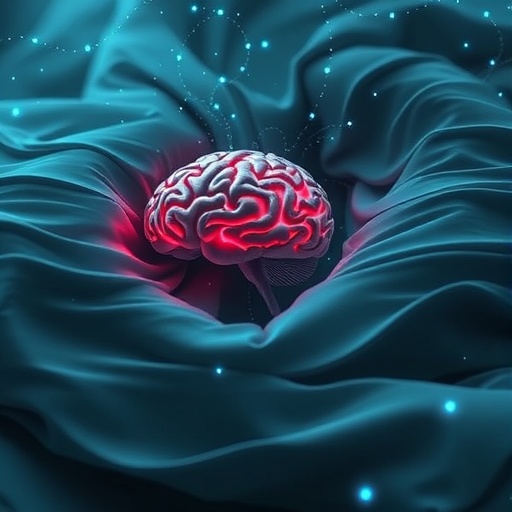An unprecedented breakthrough in the study of human consciousness has been achieved by an international consortium of researchers who have developed the largest-ever database linking brain activity during sleep with detailed dream reports. This remarkable resource, named DREAM (Dream EEG and Mentation), amalgamates extensive neurophysiological recordings with subjective dream experiences, enabling comprehensive and rigorous analyses at a scale never previously possible.
Dreams have long been shrouded in mystery, captivating humanity’s imagination for millennia—from the mystical interpretations of ancient Egypt and Mesopotamia to philosophical inquiries in ancient Greece. Despite this historical interest, scientific inquiry into dreams has often been limited by fragmented datasets and inconsistent methodologies. DREAM addresses these fundamental challenges by providing a coherent, multicenter collection of electroencephalography (EEG) and magnetoencephalography (MEG) data synchronized with first-person dream reports.
Spanning over 2,600 recorded awakenings from 505 participants in 20 distinct studies across the globe, DREAM offers a rich, heterogeneous dataset that covers various sleep stages and experimental conditions. The scope and granularity of the database allow scientists to derive robust, generalizable insights, particularly regarding the elusive neural correlates of dreaming and consciousness during sleep.
One of the most striking findings emerging from the initial analyses of DREAM concerns the occurrence of dreams across different sleep stages. Conventional wisdom has long positioned rapid eye movement (REM) sleep as the exclusive domain of vivid dreams due to its heightened cortical activation and physiological markers. However, DREAM reveals that dreaming is not confined to REM stages but also occurs within non-REM (NREM) sleep, including its deepest and physiologically subdued phases.
Intriguingly, when dreams manifest during these NREM periods, the associated brain activity surprisingly resembles patterns characteristic of wakefulness rather than typical deep sleep. This phenomenon suggests a state of “partial awakening” within the sleeping brain, wherein certain cortical networks might be selectively active, supporting conscious mentation despite the individual’s overall unconscious state.
The implications of these findings challenge long-standing neurophysiological models of sleep and consciousness, calling for a re-evaluation of how the brain negotiates internal experiences during unconscious states. It also raises questions about the dynamics of brain activity underlying subjective phenomena and the neural mechanisms that may allow consciousness to flicker during otherwise quiescent brain states.
Harnessing the power of artificial intelligence, the researchers further applied machine learning algorithms to identify patterns in brain activity preceding each awakening event. These computational models could reliably predict whether a participant was dreaming or experiencing a conscious mental state during sleep, marking a significant advance in dream detection technology. Such predictive capabilities herald transformative potential for both clinical applications and fundamental neuroscience.
Beyond predicting the presence of dreaming, this approach opens avenues for inferring the qualitative nature of dreams using non-invasive electrophysiological data. It paves the way for future tools that could classify dream content or cognitive states without reliance on subjective reporting, revolutionizing how researchers and clinicians assess sleep experiences.
DREAM’s creation was a herculean collaborative effort, reflecting international scientific solidarity. Coordinated by Monash University and incorporating contributions from 53 authors affiliated with 37 institutions in 13 countries, it demonstrates the immense value of open science and data sharing in unlocking complex brain phenomena.
This project was supported by a consortium of funders including the Bial Foundation, University of Skövde, National Health Medical Research Council, Japan Society for the Promotion of Science, and the Australian Research Council. Their support was pivotal in consolidating decades of fragmented dream research into a single, accessible repository that promises to accelerate discoveries in the field.
Beyond its immediate scientific impact, DREAM invites participation from laboratories worldwide to further enrich the database, fostering a global, collaborative ecosystem for dream research. This collective effort is poised to catalyze breakthroughs in clinical neuroscience, cognitive psychology, and the fundamental understanding of consciousness.
The implications of DREAM extend to clinical contexts such as parasomnias, including sleepwalking and other disorders characterized by altered states of awareness during sleep. Understanding the neural substrates of dreaming and consciousness across different sleep phases may lead to novel diagnostic and therapeutic strategies.
Finally, this monumental database represents a significant leap towards decoding the enigmatic experience of dreaming, bringing researchers closer to unraveling how consciousness operates when the external environment is silenced. DREAM not only provides a crucial scientific tool but also deepens our philosophical and neurological appreciation of one of humanity’s most universal experiences.
Subject of Research: People
Article Title: A dream EEG and mentation database
News Publication Date: 13-Aug-2025
Web References:
– https://bridges.monash.edu/projects/The_Dream_EEG_and_Mentation_DREAM_database/158987
– https://www.nature.com/articles/s41467-025-61945-1
References: 10.1038/s41467-025-61945-1
Keywords: Dreams, Consciousness, Cognition, Cognitive psychology, Psychological science, Neuroscience




